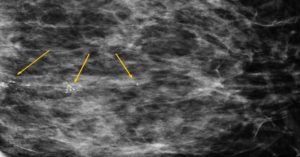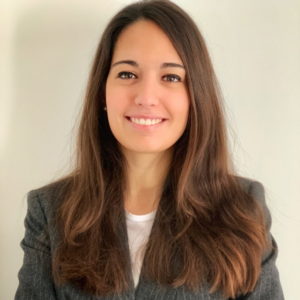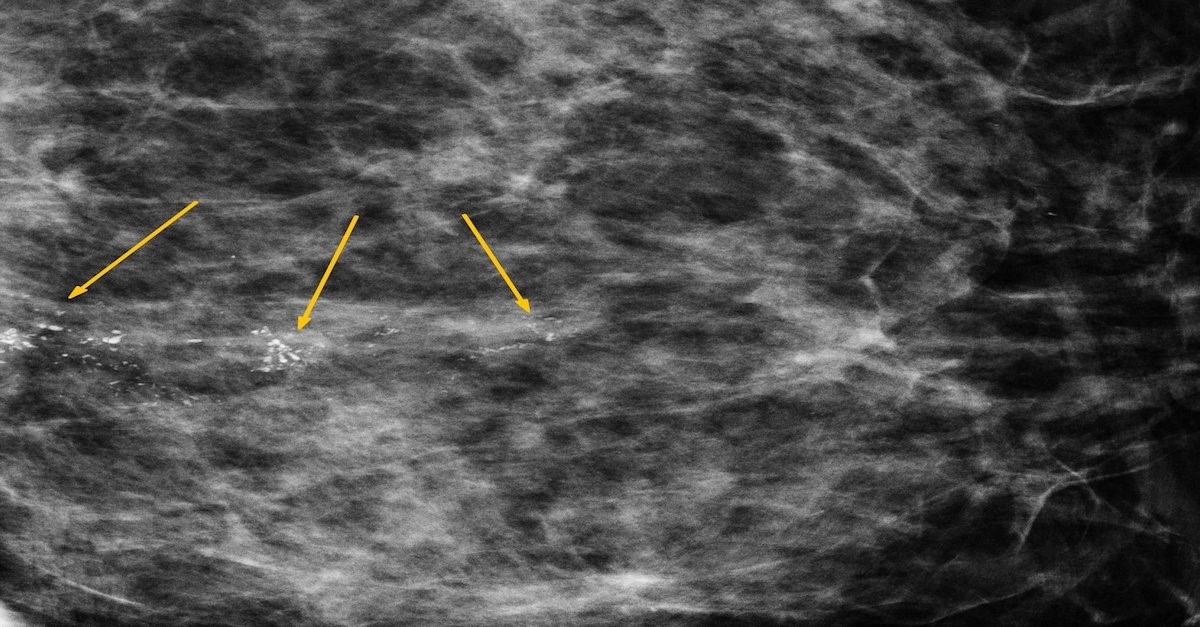So many lives have been saved thanks to the Hubble Telescope.
It sounds incredible but, among the tens of thousands of examples of technologies and their positive impacts on human lives, there is one story that reminds us how remarkable space exploration can be. An extraordinary story that begins with a colossal failure.

The image shows a mammography, and the arrows indicate microcalcifications, which are sometimes the telltale sign of breast cancer.
It was possible to detect those microcalcifications sharply because of the legendary Hubble telescope. You may be wondering how.
At the beginning of its usage, the first Hubble images were blurry because the primary mirror had been over-smoothed and flattened 2 thousandths of a millimeter too much. It is roughly one-fiftieth the thickness of a sheet of paper, yet thick enough to bounce the incident light slightly out of focus. Thus, various techniques were developed to increase the dynamic range and spatial resolution of Hubble’s initially blurred images before detecting the true cause and repairing it.
These techniques had also been applied to medicine and, in this case, allowed doctors to detect calcifications in the female breast that were smaller than before and would otherwise have gone undetected, resulting in earlier diagnosis and treatment, which is critical as the earlier the cancer is detected and treated, the greater the chances of a patient making a full recovery.
This is only one of many, many, endless instances of how space research can improve our lives.
Furthermore, this is an excellent example of how, even when a project appears to fall short of its goals or is deemed a failure, the spillover effects on the daily lives of human beings can be enormous.

This article was written by Elisa Bissacco as part of an ongoing series of scientific communications written and curated by BioTrib’s Early Stage Researchers.
She is studying a PhD in Tribological Characteristics of Nanofibrous Electrospun Materials at ETH Zurich.

